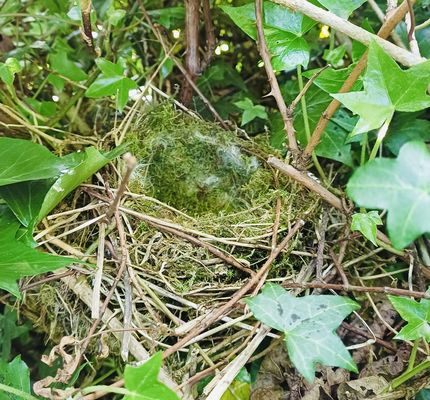IT’S a miracle of sorts – and it took place this week in Dúlra’s own garden.
It’s been transformed this year, like so many other gardens, by the No Mow May initiative. And as the lawnmower gathered dust in the shed, the garden has somehow changed into something completely different: new world populated by flowers and insects he had never seen there before.
The garden got one cut at the start of June, but for more than a month now we’ve slowly got used to the new look , even if the neighbours haven’t! Dúlra wants to leave it uncut until September, although it’s going to be that much harder getting the mower through all those high plants. Less work but harder work – it kind of evens itself out, doesn’t it?
WILD: Dúlra's garden may be unkempt, but it's pretty and full of life
The gardens here – like many in the higher parts of West and North Belfast – were once part of the hills themselves. Where we live were ancient fields with tree-lined loneys. The planners seemed keen to keep some of the hedgerows, designing estates with them in mind so they could become back-garden borders between streets. It kills Dúlra when people tear down those old hawthorns to put up wooden fences.
And also when people tear up the grass that came with the house to roll out those plastic football-pitch lawns. You may as well get the pgrass from Barbie Land! As Dúlra dandered around the garden this week, he couldn’t believe the number of insects: wasps, hoverflies and butterflies. Wild plants have enjoyed our damp summer and, spared the mower’s blade, have reached for the skies.
When Trinity College in the centre of Dublin decided to rewild its campus lawn in response to the biodiversity crisis, they were stunned to discover a rare broad-leaved helleborine orchid growing among the dandelions and buttercups. We never really know what lies beneath, dormant in the soil, because we never give it a chance.
By the way, now that most of the colourful flowers have turned to seed, many Dublin passers-by are complaining about the ‘weeds’ bringing down the appearance of the capital. Yes, it no longer appears pretty to our eyes – we’ve conditioned ourselves to want the sharp, shorn contours of a US golf course – but we’re all going to have to readjust our thinking to save a planet in crisis.
What Dúlra noticed in his garden was that many of the plants that had sprung up from the lawn were those which are normally found on the Belfast Hills. Knapweed – loved by goldfinches – stretched tall, while hugging the ground were the purple flowers of bugle. The deadly red berries of the cuckoo-pint shone from the shade of the hedges. There was the gentle buzzing of bees and flies and then could that be? Nah, Dúlra pushed the very idea of a calling grasshopper out of his mind. How could they be here, in a Belfast estate? But he took a seat among the flowers and waited. There it was again, the low, gentle reeling that sounded like a bike chain.
The sun attracts male grasshoppers, which climb to the end of a blade of grass and rub their legs against their wings to make that sound to attract a mate. The problem is that they have five eyes – and they’ll stop calling as soon as they detect any movement, even yards away. It’s like playing a game of 1-2-3 Red Lights – you have to remain as still as a statue and hope one comes near you, rather than you coming across it. Dúlra sat on the grass and waited for the sun to reappear from behind a cloud. When it did, the low reeling began again.
Dúlra scanned the grass, careful not to move an inch. Then he noticed that a wee insect had climbed on to a blade and was actually rubbing its legs against his wings in front of him. It was a grasshopper! In his own garden! Dúlra bent over and cupped his hands around it. Proof!
In the house, he managed to put a pint glass over it while he inspected it. It was a common green grasshopper, dreoilín teapaigh (wren of the hot weather), and boy could it jump. It banged itself off the inside of the glass so hard that you could hear it. After taking a couple of pix, Dúlra returned it to its garden home.
This creature has already spent four months in the grass here and has had three different bodies as it changed from nymph to adult. The larger female will lay just 14 eggs which will stay in a protective foam through winter, before hatching next spring.
Dúlra has lived here almost 20 years, but never even imagined there were grasshoppers in the garden. Had the eggs sat dormant for decades, like the Trinity orchid, just waiting to be given the chance to live?
Just letting the lawn grow until June has encouraged grasshoppers to return after a gap of many, many decades.
All those overgrown lawns might not look good to our jaundiced eyes, but the sounds of calling grasshoppers will be music to our ears.
• If you’ve seen or photographed anything interesting, or have any nature questions, you can text Dúlra on 07801 414804.









